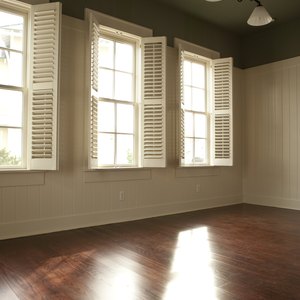
Foreclosure is a drastic and draconian measure that banks and mortgage servicers resort to when owners stop making payments. Since the property serves as collateral for the home loan, foreclosure involves the lender legally assuming ownership of the house or building, removing the delinquent borrowers from the premises and listing the property for sale.
It can be devastating to the borrowers, who lose their homes and suffer severe damage to their credit. At the same time, lenders are forced to hold property that becomes more of an expense than an asset. Amazingly, these foreclosed homes are sometimes occupied before resale.
In some instances, the lender may feel better about leaving their one-time customers in the house to preclude the approach and presence of squatters.
When Squatters Come Calling
Banks can sometimes hold a large portfolio of real estate-owned (REO) houses at any given time. Managing these holdings is time-consuming and often unprofitable. Resources and manpower are stretched thin when the REOs are plentiful, so attention to these houses is sometimes minimal. Meanwhile, the persistently darkened structures catch the notice of some who would trespass, break in and camp inside the bank's unattended asset.
The intent of squatting in a bank-owned home may be more or less benign, ranging from a quiet place to sleep to a den for drug sales and prostitution. In some states, squatters can claim adverse possession if they live in the home openly, paying taxes, for a specified period of time. New York's statute allows for 10 years to pass. Most of the time, squatters have no history with the house; on other occasions, they may be the expelled delinquent borrowers.
Read More: Buying a Home Pre-Foreclosure: What You Need to Know
When Owners Become Tenants
As burdensome as REOs are for banks and lenders, they might be talked into allowing the foreclosed party to remain in the dwelling as renters. If the home loan is backed by Fannie Mae, it may be eligible for its Former Owner Rental Program. This means the borrowers from whom the property was seized can continue living there until the bank sells it.
Eligibility rests on continued occupancy in the home, cooperation with Realtors and agents who are working to sell the property and keeping the house in good and reasonable condition. For these commitments, the prior owners reside in the home, paying market rents, until it is conveyed to a new owner. Obviously, the bank is not obligated for a fixed period of time since resale could come sooner or later. Still, this offering gives the ex-borrowers a little time and breathing room to plan their next steps.
Read More: Buying a Home in Foreclosure
When Eviction Moves Slowly
As noted above, foreclosures can be headaches for banks. Among the difficulties is arranging for the removal of the prior owners. In some instances, the lender may feel better about leaving their one-time customers in the house to preclude the approach and presence of squatters.
Normally, though, when all the details of the foreclosure are in place, the lender formally notifies the borrower of the process of eviction. At this point, the foreclosed party has between three and 30 days to depart the premises. Many go quietly. Others remain, requiring the bank to file suit.
As the case works its way through court machinery, the residents can maintain their position until a judge orders them out, backed up by muscle from a county sheriff. This sort of delay occurs with non-judicial foreclosures. In other states, all foreclosures must go through the courts so once the expulsion occurs when the foreclosure is finalized.
If these scenarios tell us anything, it is that banks and lenders see foreclosure as a necessary evil. Distressed borrowers should reach out for alternatives. Lenders might cooperate.
References
Writer Bio
Adam Luehrs is a writer during the day and a voracious reader at night. He focuses mostly on finance writing and has a passion for real estate, credit card deals, and investing.

